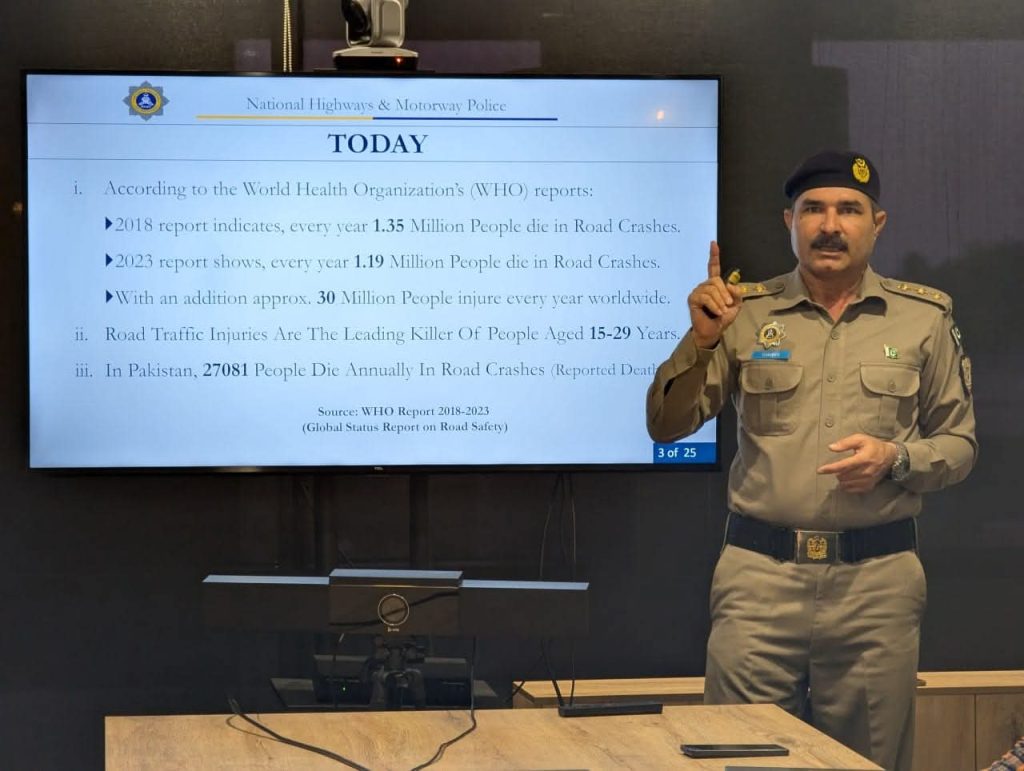Road Safety Awareness Unit
Road Safety and the Role of NHMP Training College
As the premier training institution of the National Highways and Motorway Police (NHMP), the Road Safety Awareness Unit plays a pivotal role in advancing road safety education, enforcement, and awareness across Pakistan. While the three E’s of transportation—Education, Engineering, and Enforcement—form the foundation of road safety, education remains the most underutilized yet transformative component.
In Pakistan, many road users obtain driving licenses without adequate orientation on civic sense, traffic laws, or responsible driving. This gap in knowledge contributes directly to reckless driving and the growing number of crashes. NHMP Training College addresses this critical gap by equipping officers and stakeholders with the expertise needed to educate, regulate, and influence safer driving behavior nationwide.

Road Safety
road crashes cannot be eliminated overnight, strategic education, effective enforcement, and public awareness can significantly minimize the risks. Ultimately, road safety is a shared responsibility, where every individual’s civic sense and discipline on the road contribute to saving lives.
Road traffic crashes are a leading global concern, claiming approximately 1.19 million lives annually and causing non-fatal injuries to 20–50 million people worldwide. Vulnerable road users—such as pedestrians, cyclists, and motorcyclists—account for more than half of these fatalities. Disturbingly, road traffic injuries are the primary cause of death among children and young adults aged 5–29, while the majority of fatalities (two-thirds) occur within the working-age population (18–59 years).
Despite owning only 60% of the world’s vehicles, low- and middle-income countries account for nearly 90% of global road traffic deaths. This disproportionate burden is further intensified by the heavy economic costs of crashes—treatment expenses, loss of productivity, and a broader impact on national economies, estimated at 3% of GDP.
Recognizing the gravity of this challenge, the 2030 Agenda for Sustainable Development has set the ambitious target of reducing road traffic deaths and injuries by 50% by 2030.
